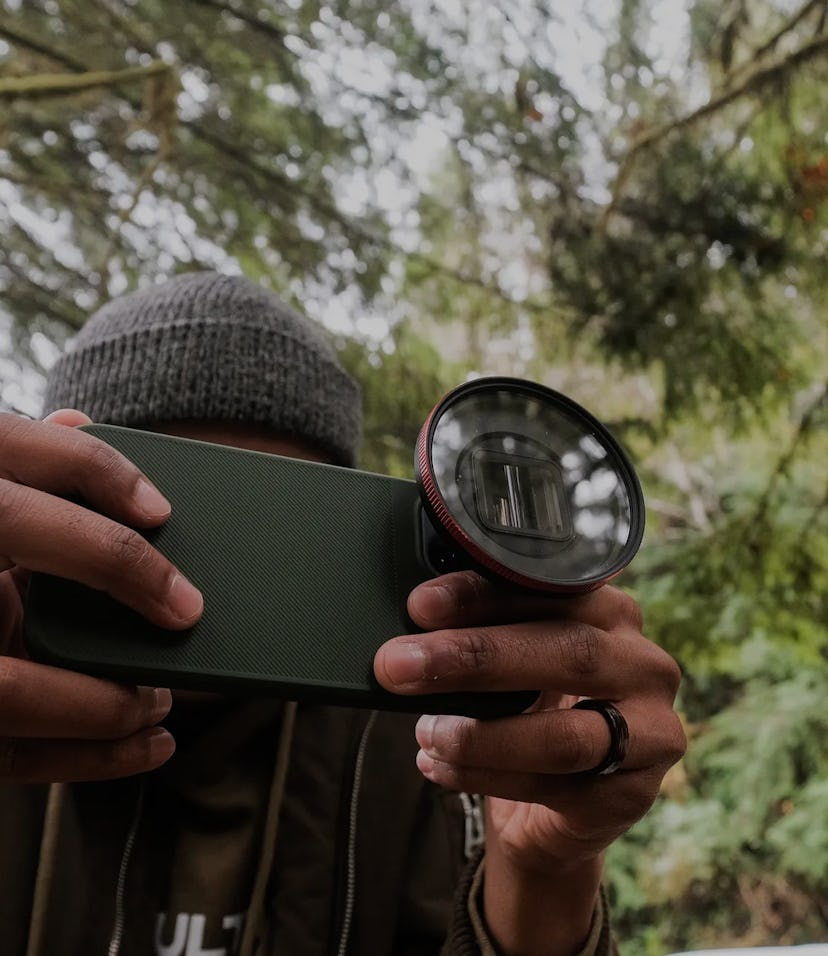Guides
Does the Galaxy S21 Ultra mark the end of smartphone add-on lenses?
Will built-in, high-quality telephoto and ultrawide cameras be the end of add-on lenses?

Every year when a new Android flagship with a hot new camera comes out I pester the people at Moment about their plans to support it. Last fall I was so happy with the camera on my OnePlus 8 Pro that I bought a 3D printer and commissioned some CAD designers to make a Moment lens mount for it, but it turns out that it’s not so easy to make a smartphone case, let alone one with a bayonet mount.
Why go through all this trouble? It’s actually pretty simple: For a long time smartphones only had one camera, so if you wanted to change focal lengths optically, you had to either move your feet or bolt on an add-on lens like the ones you can get from Moment or Ulanzi. These unlocked a whole wave of creative options, like fisheye shots, macro shots, and anamorphic shots.
Then smartphone makers started adding auxiliary cameras to their phones. The only problem was that they weren’t very good. To get a 2x zoom on the iPhone 7 Plus, you had to settle for image capture on a much smaller sensor, and the pictures suffered for it. So even with the advent of these aux cameras, there was still a pretty big upside for using add-on lenses.
But things really started to change back in early 2020 when Samsung announced the Galaxy S20 Ultra with an absolutely massive 1/1.33-inch sensor on the main camera, an ultrawide camera, and a 4x periscope zoom camera. Things didn’t really work out because the camera had some pretty serious problems, but this combination of a huge sensor with formidable aux cameras set in motion a trend in smartphone photography that is only beginning to reach its apex now.
Since then, Apple has released the iPhone 12 Pro Max which is unique in that it has a considerably (47 percent) larger sensor than other iPhones in the 12 series. The 12 Pro Max also has an ultrawide camera and a 2.5x zoom camera, plus a Lidar detector for good measure.
On the iPhone 12 Pro Max, it still makes a lot of sense to use an add-on lens to take advantage of Apple’s larger sensor. Not only is it bigger, which gives it bigger pixels and in turn better performance in low-light conditions, it also has tilt-shift image stabilization. So regardless of whether you’re shooting stills or video, it makes sense to take advantage of that main camera.
You might also have heard about the S21 Ultra that was just released. Ray, our reviews editor, was pleasantly surprised by how much Samsung improved or fixed the problems with last year’s model. But outside of the main sensor, Samsung also significantly upped the ante with the phone’s aux cameras by adding autofocus to the ultrawide, adding a 3x telephoto camera with a pretty wide aperture, and a 10x telephoto camera with a periscope zoom.
This begs the question: Do you still need add-on lenses for a smartphone that has four cameras on the back? The answer, in my opinion, is yes, but the value proposition is changing. I still want to get the best possible images, and I specifically bought an S21 Ultra with its 108-megapixel camera for taking landscape photos while I’m out hiking and backpacking. By the time you read this, I will likely already be on a plane to do a photo essay with the S21 Ultra, but that’s all the teasing you’ll get on that for now.
In an ideal world, I’d be taking landscape shots in 108-megapixel mode through Moment’s anamorphic or wide-angle lenses but, apparently, my mobile photography ambitions have yet again been thwarted.
For the S21 Ultra, Samsung decided to take the already wide lens from the S20 Ultra and make it even wider, bringing it to an equivalent 24mm. On the one hand, this is great: The lens on the S20 Ultra was actually quite bad, so I’m glad they ditched it, and people really like the 24mm focal length in the DSLR world. But on the other hand, this wider field-of-view makes the S21 Ultra basically incompatible with existing add-on lenses.
For the S21 Ultra, Samsung decided to take the already wide lens from the S20 Ultra and make it even wider.
When Moment put up a survey on its subreddit asking users how they felt about this potential problem, I was worried about serious vignetting. After getting some samples (which will be included below) from the team at Moment, I’m disappointed but it’s not as bad as I expected. Yes, it takes the prospect of plug-and-play lenses off the table, but the vignetting is mild enough that dedicated photographers could crop the vignetting out if they really wanted to.
Since the survey went out, Moment has announced that it will ultimately provide lens mounts on its S21 Ultra case despite the vignetting. Sure, the lens situation is a bummer, but Moment’s bayonet mount also supports filters, and now that Samsung has abandoned its dual-aperture technology (which I will grumble about until I die), controlling the incoming sunlight with a neutral density filter is actually really important.
So is this the end of add-on lenses for smartphones? Not quite. But are we experiencing some mobile photography growing pains as companies move to much larger sensors and much higher quality aux cameras? Absolutely.